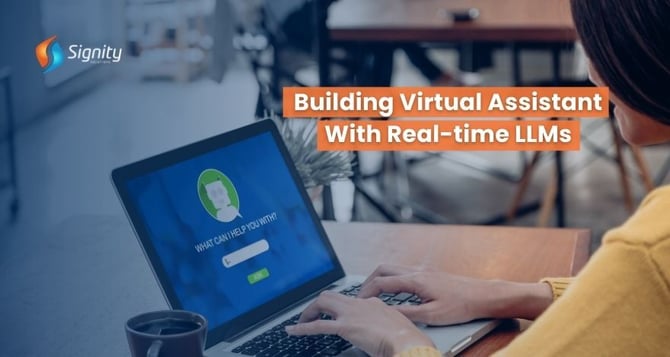Build a Virtual Assistant with Real-Time LLMs
Explore the transformation of virtual assistance through real-time Large Language Models (LLMs) like GPT-3. Learn how these AI companions dynamically engage users, offering personalized assistance in natural conversations, revolutionizing user experiences.

Introduction
In the contemporary digital landscape, virtual assistants have emerged as indispensable tools, seamlessly assisting users with a myriad of tasks ranging from scheduling appointments to furnishing real-time information. The advent of real-time Large Language Models (LLMs), exemplified by GPT-3, has ushered in a new era of virtual assistant development, empowering developers to craft responsive AI companions capable of engaging users in fluid and meaningful conversations.
The Significance of Real-Time LLMs in Virtual Assistants
Traditional virtual assistants often operate within the confines of pre-programmed responses or rule-based systems, thereby constraining their adaptability and responsiveness. Real-time LLMs, such as GPT-3, disrupt this paradigm by dynamically generating responses based on conversational context, enabling virtual assistants to deliver personalized and contextually relevant assistance.
Leveraging Real-Time LLMs for Virtual Assistant Development
-
Data Collection and Preprocessing: Curate a diverse dataset of conversational data to train the LLM, ensuring comprehensive coverage across various topics and dialogue styles. Preprocess the data to eliminate noise and standardize its format for training purposes.
-
Model Training: Fine-tune the LLM, such as GPT-3, using the collected dataset to augment its comprehension of natural language and contextual nuances. Train the model to produce coherent and contextually appropriate responses in real time.
-
Integration with Conversational Interface: Develop a conversational interface, be it a chatbot or voice assistant, to facilitate interactions with users. Seamlessly integrate the real-time LLM into the interface, enabling it to generate responses tailored to user queries and contextual cues.
-
Deployment and Optimization: Deploy the virtual assistant within production environments, ensuring scalability and reliability. Continuously refine both the model and interface based on user feedback and performance metrics.
Technical Implementation Example
|
|
How Our Company Enhances Your Virtual Assistant Experience
At Generative AI Development Company, we specialize in leveraging cutting-edge technologies, including real-time LLMs, to elevate the capabilities of virtual assistants.
Our team of experienced ChatGPT developers is adept at crafting bespoke solutions tailored to your specific needs, ensuring that your virtual assistant stands out in terms of responsiveness, adaptability, and user engagement.
Whether you're seeking to streamline customer support, augment productivity, or enhance user experiences, our expertise in real-time LLM integration guarantees a virtual assistant that not only meets but exceeds your expectations. Partner with us to embark on a journey towards redefining the landscape of virtual assistant technology.
Increase Customer Satisfaction by 75%
Increase retention rates and loyalty by 75% with conversational AI-driven virtual assistants. Get started now.
Conclusion
The integration of real-time LLMs in virtual assistant development signifies a monumental leap forward in conversational AI, facilitating more natural and immersive interactions between users and machines.
By harnessing the capabilities of real-time LLMs like GPT-3, developers can engineer virtual assistants that dynamically adapt to user queries and contextual nuances, thereby furnishing personalized and pertinent assistance in real time.
As the field of natural language processing continues to evolve, the potential for real-time LLMs in virtual assistant development remains limitless, promising heightened user experiences and heightened automation across diverse domains.


%201-1.webp?width=148&height=74&name=our%20work%20(2)%201-1.webp)


.png?width=344&height=101&name=Mask%20group%20(5).png)
















